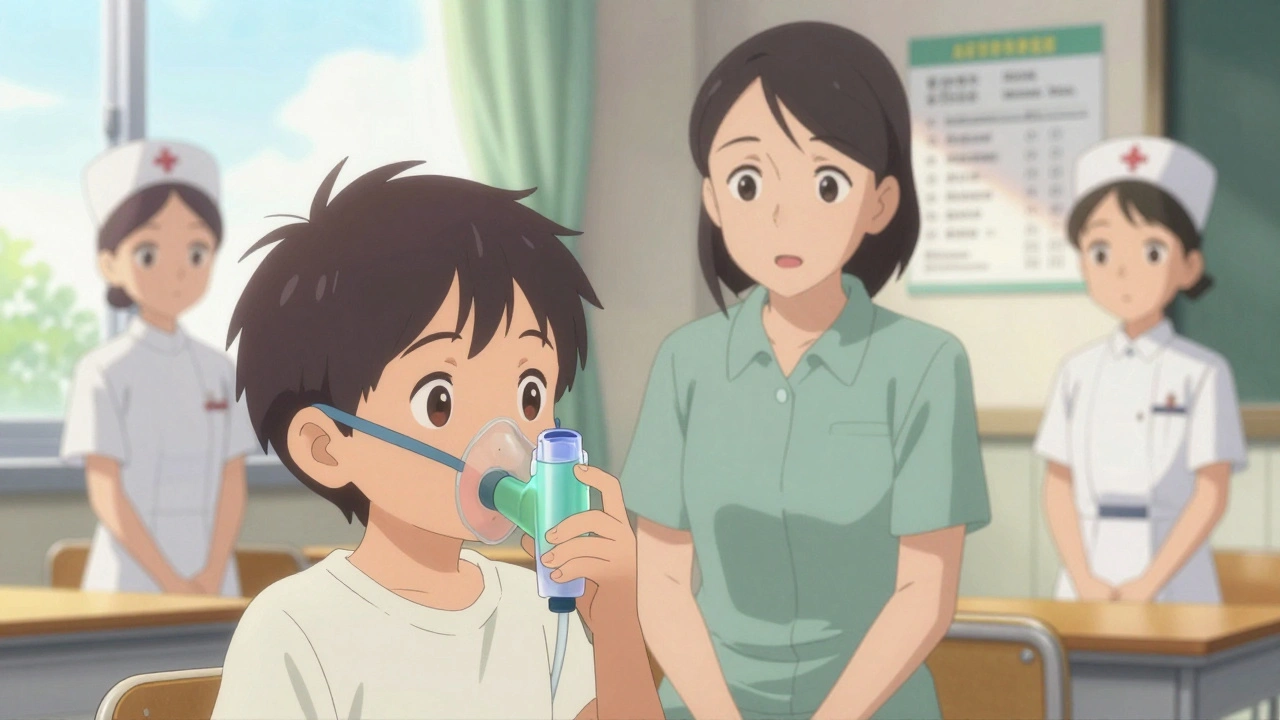Inhaler Technique: How to Use Your Inhaler Right and Get Full Relief
When you use an inhaler technique, the specific way you activate and breathe in medication from a handheld device to treat asthma or COPD. Also known as inhaler use, it’s not just about pressing the canister—it’s about timing your breath, holding it, and making sure the drug reaches your lungs, not your throat or mouth. If you’re not doing it right, up to 80% of your medicine might just sit there, useless. That’s why people on the same dose as you still feel short of breath—your technique might be the problem, not your medication.
Using a spacer device, a tube-like attachment that holds the medicine after you press the inhaler, making it easier to inhale slowly and fully can fix most mistakes. It’s especially helpful for kids, older adults, or anyone struggling to coordinate the press-and-breathe motion. But even with a spacer, you still need to seal your lips around it, breathe in slowly for 3-5 seconds, then hold your breath for 10 seconds. Skip that last step, and the medicine doesn’t settle where it needs to. And if you’re using a COPD inhaler, a device designed for chronic obstructive pulmonary disease, often containing long-acting bronchodilators or corticosteroids, the rules are even stricter—mistiming your breath can mean worsening flare-ups instead of preventing them.
Most people think they’re using their inhaler correctly because they’ve been doing it for years. But studies show that even doctors and nurses get it wrong sometimes. The most common errors? Pressing the inhaler too early or too late, breathing out into the mouthpiece first, not shaking the canister, and not rinsing your mouth after steroid inhalers (which leads to thrush). You don’t need a fancy app or a clinic visit to check your technique—just grab your inhaler, stand in front of a mirror, and watch what happens when you press it. If you see or taste the medicine in your throat, you’re not getting the full dose.
This collection of articles doesn’t just explain how to use an inhaler—it dives into the real-world problems people face. You’ll find tips on managing side effects from inhaled steroids, how to tell if your inhaler is empty, why some people switch to dry powder devices, and how to help elderly relatives who struggle with hand-breath coordination. There’s also advice on what to do when your inhaler doesn’t seem to be working anymore, even though you’re following the steps. It’s not about theory—it’s about what actually works when you’re gasping for air, in a hurry, and tired of feeling like the medicine isn’t helping.
Getting your inhaler technique right might be the single most effective thing you can do for your breathing. No new drug, no extra dose, no expensive upgrade—just better use of what you already have. And if you’ve ever thought, "I’m doing everything right, but I still feel bad," this is where you start fixing it.

Asthma in Children: How Spacers, Schools, and Care Plans Work Together
Asthma in children is manageable with the right tools. Learn how spacers improve inhaler effectiveness, why school care plans are essential, and how to ensure your child uses them correctly every time.

Inhaler Technique: Step-by-Step Guide for Accurate Medication Delivery
Learn the correct 8-step inhaler technique to ensure medication reaches your lungs, not your throat. Fix common mistakes that reduce effectiveness and increase side effects for asthma and COPD patients.
